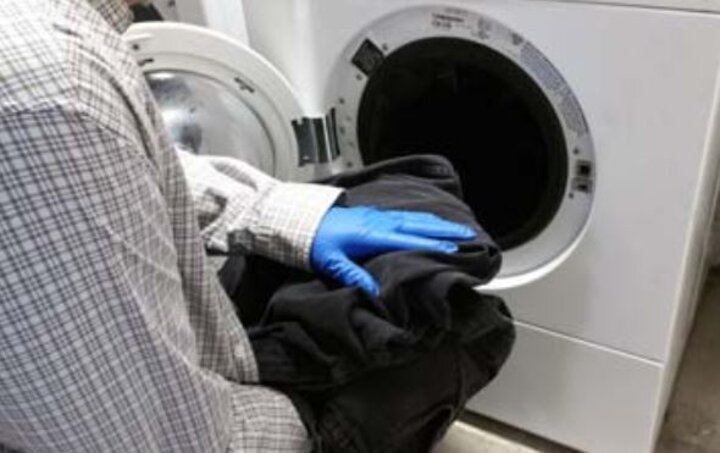Pesticide-contaminated clothing needs to be treated differently than the rest of the family laundry.
“Pesticides pose a potential health risk, even for the person handling and washing pesticide-contaminated clothing,” said Clyde Ogg, UNL pesticide safety extension educator with the University of Nebraska-Lincoln. Since most pesticide exposure occurs through the skin, a good laundering routine helps keep the family safe. It begins by reviewing the pesticide label.
“The label is a legal document that determines whether the clothing can be washed and if so, how,” Ogg said. For example, for clothing not heavily contaminated, the label may direct using strong detergents, hot water, and a long wash cycle. Other laundry tips include:
- Discard garments drenched or heavily contaminated with pesticides, including shoes and boots.
- Wear a long-sleeved shirt and gloves (similar to those used by the pesticide applicator) when handling contaminated clothing to minimize skin exposure to pesticides.
- While outdoors, shake, sweep, or dust off contaminated clothing with compressed air. Empty cuffs and pockets where residues may collect.
- Wash clothing as soon as possible. Washing efficiency is significantly less for clothing laundered 24 hours or more after being contaminated. If clothing is not washed immediately, store it separately outside the home in a designated area, inside a plastic garbage bag or container dedicated to this purpose.
- Always launder pesticide-contaminated clothing separately from the other family wash.
Newer Laundering Developments Yet to be Tested
Significant changes have occurred in pesticide toxicity and formulation, detergents, washing machines and clothing finishes since research was conducted on laundering pesticide-contaminated clothing in the 1980s and early 1990s, said Clyde Ogg, pesticide safety extension educator with the University of Nebraska-Lincoln.
For example, today’s detergent manufacturers sell encapsulated, highly concentrated detergents in water-soluble pods. While pods have not been evaluated for efficacy in removing pesticides from contaminated clothing, following the proper laundering procedures should clean clothing that is lightly or moderately contaminated with pesticides.

10 Laundry Room Tips for Pesticide-Contaminated Clothing
- Check the manufacturer’s directions for your particular washing machine to achieve best results.
- Pre-rinse, presoak or pretreat clothing.
- Use hot water and the maximum recommended amount of heavy-duty (extra strength) liquid detergent.
- Use the highest water level and the longest wash cycle – at least 20 minutes. Wash clothing two or three times if heavily soiled; discard clothing if it is heavily contaminated.
- Load washer to no more than 50% to 75% of clothing capacity for best results.
- Use a high-speed spin to further remove moisture and contaminants from clothing.
- When wash is complete, run one additional empty cycle without clothing, using detergent and hot water, before using the machine for family laundry.
- Dry clothes outside if practical. Sunlight can further break down any residues left in the fabric, and prevents any residues from getting in the clothes dryer.
- Note that bleach, ammonia and fabric softeners do not consistently help remove pesticides from clothing.
- If using a commercial laundering firm or laundromat, notify or check with management if you plan to have them clean your contaminated clothing.
“Breathable” or synthetic fabrics have not been tested with these recommendations; check with the manufacturer of these products for cleaning recommendations.
While front- or top-loading machines without agitators are becoming more common, comparisons have not been made regarding their relative efficiency in removing pesticides from clothing.
Source
For more information see Laundering Pesticide-Contaminated Work Clothes (PS1779), a regional publication by North Dakota State University Extension. Clyde Ogg, UNL pesticide safety extension educator, was a contributing author.
